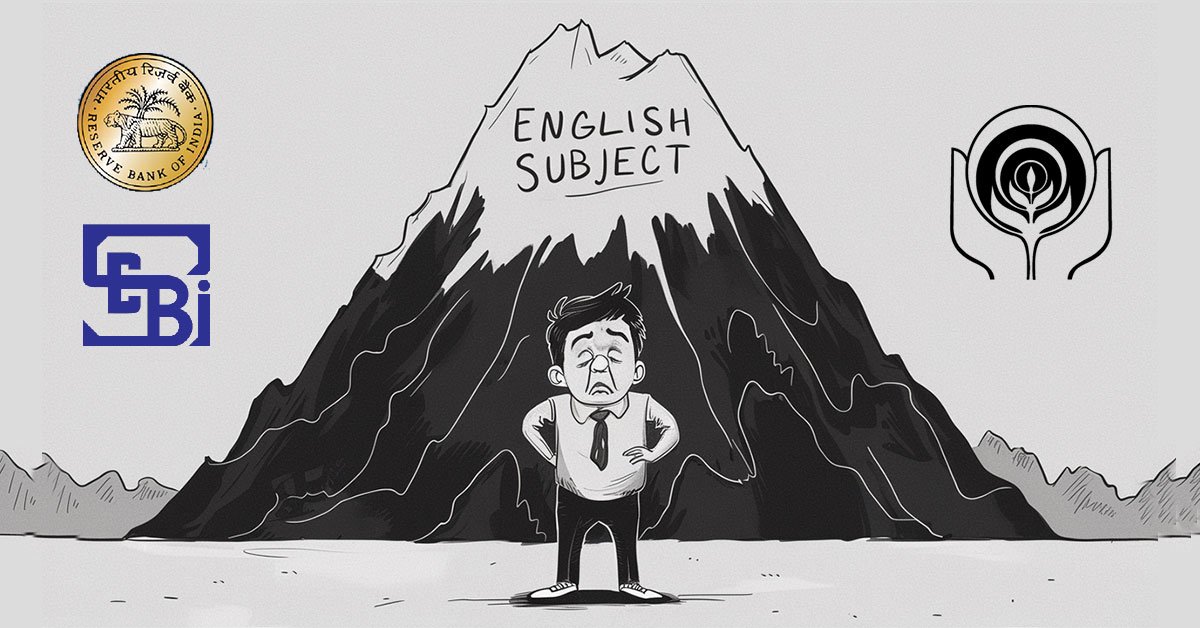Daily Current Affairs Quiz
6 February, 2025
🚨 AIC Crash Course 2025 Launched Today! 🚨
Designed to fast-track your preparation and help you achieve success! 🎯
👉 Limited Time Offer at 599/- – Don’t Miss Out!
Enroll NOW and take the first step towards acing the exam! 🚀

International Affairs
1. Development of Gaza by U.S.
Context:
U.S. President Donald Trump announced an unexpected plan to take over the Gaza Strip, following the resettlement of Palestinians elsewhere. The proposal was made during a joint press conference with Israeli Prime Minister Benjamin Netanyahu. This move marks a radical departure from U.S. policy on the Israeli Palestinian conflict.
Key Highlights:
- U.S. Takeover & Reconstruction
- Trump said that the U.S. would take “ownership of Gaza,” make sure to clean out the “unexploded bombs”, and develop the area economically.
- In terms of economics, the proposal entails job creation and infrastructure development, developing Gaza into an area the “entire Middle East can be proud of.”
- Palestinian Resettlement
- Trump suggested permanent relocation of Palestinians from Gaza to neighboring countries, describing the place as a “demolition site.”
- He tasked Jordan, Egypt, and other Arab states to take in the displaced Gazans.
- Who Would Live in Gaza?
- Trump hinted that the rebuilt Gaza can be a home for the “people of the world.”
- Netanyahu’s Reactions
- The Israeli PM praised Trump’s “fresh ideas”, commending his “outside the box thinking.”
Implications & Controversy
- Break from Decades of U.S. Policy
- The U.S. has traditionally supported a two state solution, so Trump’s plan is unprecedented.
- Arab World Reaction
- The call on Arab states to take in the Gazans will be met by resistance since other nations detest forced expulsion.
- Political Implications
- The suggestion could increase tensions in the region, with Palestinian governments, other Arab countries, and the global community not taking it well.
Israel-Palestine War
2. India-U.S. Trade Deal
Context:
India is open to reviving talks on a limited trade deal with the US during Prime Minister Narendra Modi’s visit to Washington. The government official said that India is open to a mini trade deal if the US is also willing.
Prime Minister’s Visit to Washington
- Modi to visit on February 12, 2025
- First meeting between President Donald Trump and PM Modi since January 2020.
- Agenda for the visit
- Finalization still on, talks would be centered around further strengthening bilateral ties.
Important Discussions on Key Trade Proposals
- Prior to the visit, the key government departments of commerce, industry, and external affairs have gone into an intense discussion on key trade related proposals.
- The aim is to enhance the economic collaboration between India and the United States.
Global Trade Context
- The visit coincides with renewed trade tensions between the US and China.
- Furthermore, it is also accompanied by the growing possibility of tariffs disputes with immediate neighbors, including Mexico and Canada, of the US, hence, complexities in the overall global trade climate.
3. U.S. Nuclear Deal with Iran
Context:
US President Donald Trump has agreed to immediately start working on a new nuclear deal with Iran to allow the country to “peacefully grow and prosper.” He termed reports that US and Israel plan to attack Iran as “greatly exaggerated”.
Trump’s Directive and Economic Pressure
- Trump signed a directive to enforce tougher sanctions on Iran, reinstating a policy from his first term that included the US withdrawing from the 2015 nuclear deal.
- This step follows other moves under way to create economic pressure on Iran, accused by the US, and many international observers, of using its civilian nuclear program as cover for developing potentially nuclear weapons the charge that Teheran absolutely denies.
Iran’s Readiness for Diplomacy
- Iran indicated that it was ready and willing to present the US once again with its differences.
- Foreign Minister Abbas Araqchi stated that Iran’s opposition to nuclear weapons could help address US concerns about Iran’s nuclear ambitions.
- Tehran expressed concern about Israel’s involvement in the region, with officials suggesting the US should restrain Israel if it seeks a deal with Iran.
Challenges for Iran’s Clerical Leadership
- Analysts point out that Iran’s regional influence has been significantly weakened due to the Hamas Israel conflict in Gaza and economic dissatisfaction among its population.
- Many believe that Iran may have little choice but to pursue a deal with Trump given these challenges.
4. U.S. Exit from the UN Human Rights Council
Context:
US President Donald Trump issued an executive order to pull the US out of the UN Human Rights Council. The order further forbids funding for the UN refugee agency for Palestinian refugees, representing a sharp policy turn for the United States on foreign policy.
UNESCO Membership
- He also ordered the US to review its involvement in the United Nations Educational, Scientific and Cultural Organization (UNESCO).
- This organization, UNESCO, which makes use of culture and history to develop international cooperation may have to reappraise its involvement with the US under the new directive set by Trump.
- These actions represent the Trump administration’s position in limiting US involvement with international bodies it deems biased or ineffective, especially regarding issues related to Israel and Palestine.
- The US’s withdrawal from these organizations may have profound effects on the world’s diplomatic relations and humanitarian work.
United Nations Human Rights Council (UNHRC)
- Founded In
- 15 March 2006
- President
- Jürg Lauber
- Headquarter
- Geneva, Switzerland
Mission and Role
- The UNHRC is a subsidiary organ of the United Nations. It is concerned with promoting and protecting human rights worldwide.
- Examines grievances against UN member states for their human rights violations. In addition, thematic concerns over:
- Freedom of association and assembly.
- Freedom of speech.
- Freedom of thought and religion.
- Women’s rights.
- LGBT rights
- Racial and ethnic minorities
- Rights
Governance
- The body was created by a resolution of the UN General Assembly in March 15, 2006, following a decision of replacement of UNCHR.
- There are 47 member states composing UNHRC, they have their election during General Assembly of UN for terms running for three years with rotation or staggered period.
- No country can serve more than two consecutive terms.
- Its members are elected on regional basis based on equitable geographic rotation.
Sessions
- The United Nations Human Rights Council meets through regular sessions three times a year in March, June, and September.
- It can also host special sessions on the basis of one third of the members for the issue of utmost concern towards human rights. Until now, up to November 2023, 36 special sessions have been conducted.
Regional Representation
- The Council has 47 seats divided along the following lines:
- 13 seats to be allocated to the African Group
- 13 seats to the Asia Pacific Group
- 6 seats to the Eastern European Group
- 8 seats to the Latin American and Caribbean Group
- 7 seats to the Western European and Others Group
National Affairs
1. UGC Regulations, 2025
Context:
Six Higher Education Ministers from Karnataka, Kerala, Tamil Nadu, Telangana, Jharkhand, and Himachal Pradesh passed a joint resolution against the draft UGC regulations and grading system under the New Education Policy 2020.
Key Provisions of Draft Regulation and UGC Mandate
- A new draft version of the regulation for UGC 2010 is proposing expansion of the category of appointment of vice chancellor.
- Currently, eligible candidates must have at least a 10 years of teaching experience as professors.
- The draft proposes eligible candidates as individuals with similar amount of service experience in the industry, the public administrations, or a public policymaker.
- Supporters argue this expands the pool of talent while critics argue it intrudes upon States’ jurisdiction on higher education and deviates from the core mission of the UGC.
Mission of the UGC
- University Grants Commission (UGC): Constituted in 1956, it’s tasked with:
- Coordinating and sustaining standards of universities throughout India.
- Providing advice to governments, setting fees, setting standards for teaching, and grants distribution.
- Yet, the UGC Act does not confer any specific mandate for the Commission to regulate the appointment of vice chancellors, an act that has been termed as overreach.
Legal and Constitutional Challenges
The Jurisdiction of the UGC
- The UGC Act, 1956 defined the jurisdiction of the Commission, which is said to cover academic standards, qualification for teachers, and education development programs.
- The Act does not grant the UGC power over administrative appointments, such as vice chancellors, whose role extends beyond academic oversight to institutional governance.
- Critics argue that the draft regulation is an ultra vires action, i.e., it exceeds the authority of the UGC and could be deemed invalid.
Judicial Interpretations and Precedents
- Suresh Patilkhede vs The Chancellor, Univ. of Maharashtra (2011)
- The Bombay High Court held the appointment of vice chancellors comes within States’ jurisdiction only and should be governed in accordance with a State statutes.
- Kalyani Mathivanan v K.V. Jeyaraj (2015)
- While the SC held that provisions of UGC regulations come into force vis à vis State university, it hasn’t dealt about the power by UGC itself in the election of vice chancellors directly.
Implications on Federalism and the Principle of Repugnancy
- Education is a Concurrent List subject, thereby both the Centre and State governments are competent to make laws.
- The State legislatures have autonomy over the universities they establish, including their choice of the vice chancellor.
- The Constitution, through Article 254 indicates that laws made by The Centre supersede the ones made by The States. However, this mainly pertains to Acts and not to subordinate regulations such as the one made by the UGC.
- This is why the rules of the UGC cannot abrogate State enactments unless clearly repugnant to a Central enactment.
Recommendations and the Way Forward
- The observations of the Supreme Court in Kalyani Mathivanan indicate that the UGC’s directive related to vice chancellors should be more advisory than directive for State universities.
- A collaborative response from the State governments and stakeholders will ensure that the reformation is kept centered but ensures federal balance and academic excellence.
2. Sacred Groves
Context:
On 18 Dec 2024, the Supreme Court directed Rajasthan Forest Department to identify and classify all its Sacred Groves as forests and notifi them under the category of community reserves with the notification that they have fallen under WLPA 1972.
Background
Sacred groves are traditional, community conserved patches of forest with cultural and ecological significance. In Rajasthan, these groves cover approximately six lakh hectares across 25,000 sites. The Supreme Court’s order, however, challenges the Forest Rights Act (FRA) 2006, which had been intended to return forest management to gram sabhas (village councils), rather than the Forest Department.
What are Sacred Groves?
- Sacred groves are small forests that are commonly protected by local communities because of their cultural or religious value. Most of these groves are tied to temples, shrines, or graveyards, and their protection is ensured by the local customs and taboos.
- They are biodiversity hotspots, conserving unique plant species, and often sources of medicinal plants and water. Sacred groves also help in soil conservation and reduce the impact of natural disasters like floods and landslides.
- India has 1-10 lakh sacred groves, the highest number in the world, with different names in different regions, such as devara kadu, devban, and kavu.
Traditional Community Conservation Methods
- Cultural and Religious Ties
- Sacred groves are normally inviolable, and local taboos strictly forbid resource extraction, except for a few medicinal purposes.
- Local Governance
- These groves are managed by communities through customary laws, which are passed down through generations, hence their protection.
- Ecological Role
- Sacred groves help in local biodiversity conservation and, in many instances, act as water sources for areas around them while playing a key role in community health.
Community Reserves under Wildlife Protection Act, 1972
Community reserves were brought in under the WLPA 2002 for protecting areas of cultural significance wherein local communities voluntarily conserve habitats.
- Community Reserves
- Local communities are in charge of preventing illegal activities and assisting the authorities in the conservation process.
- Reserve management can only be carried out with the consent of the reserve management committee, comprising of local representatives.
- Land use change in community reserve requires the nod of the committee and state government.
Forest Rights Act 2006 and Sacred Groves
- According to FRA 2006, Sacred groves comes under the ambit of Community Forest Resources, Gram Sabhas are mandated to manage and conserve.
- FRA’s Scope
- The FRA recognizes communities’ customary rights over forest resources, which would give gram sabhas the power to manage sacred groves without Forest Department intervention.
- The Supreme Court’s direction to notify sacred groves as community reserves under the WLPA could undermine the traditional governance established under the FRA, potentially conflicting with customary rights and local practices.
- Sacred groves have different names in different regions of India, including:
- Sarna in Bihar
- Dev Van in Himachal Pradesh
- Devarakadu in Karnataka
- Kavu in Kerala
- Dev in Madhya Pradesh
- Devarahati or Devarai in Maharashtra
- Lai Umang in Manipur
- Law Kyntang or Asong Khosi in Meghalaya
- Age
- Some sacred groves are over 5,000 years old.
UPSC Civil Services Examination, Previous Year Questions (PYQs)
Q. If a particular plant species is placed under Schedule VI of the Wildlife Protection Act, 1972, what is the implication? (2020)
(a) A licence is required to cultivate that plant.
(b) Such a plant cannot be cultivated under any circumstances.
(c) It is a Genetically Modified crop plant.
(d) Such a plant is invasive and harmful to the ecosystem.
Ans: (a)
3. PRASHAD Scheme
Context:
The Parliamentary Standing Committee on Transport, Tourism, and Culture expressed disappointment over the slow progress in key projects under the Pilgrimage Rejuvenation and Spiritual Augmentation Drive (PRASHAD) scheme, which aims to develop spiritual tourism circuits across India.
PRASHAD Scheme
The PRASHAD scheme is the Pilgrimage Rejuvenation and Spiritual Augmentation Drive scheme by the Ministry of Tourism, Government of India. It aims to improve the religious tourism experience in India by developing and promoting pilgrimage sites.
- Launched
- It was launched in 2014-2015 by the Ministry of Tourism, Government of India.
What does the scheme do?
- Financial assistance to the state governments and union territories for developing tourism infrastructure at pilgrimage sites.
- Accessibility Cleanliness Security Accommodation.
- Helps in pilgrim destinations more accessible, cleaner, safer and comfortable.
- Boosts sustainable pilgrim destination for tourism development.
- Aims
- Utilising local arts and crafts.
- Benefits of this scheme.
- Embracing religions as a boost in tourism within a country.
- Increases domestic tourist attraction.
- Hailed to improve heritage and spirituality in pilgrim towns.
- This infrastructure can develop
- Land scaping
- Wet fountains
- Fences
- Lightening
- Paved pathways
- Dinning places
- Watering
- Waste and drainages bins
Current Status Under PRASHAD Scheme
- Of 45 projects undertaken under the PRASHAD scheme, only 21 projects have been completed while many are pending.
- The committee recommended that the government should develop a standard operating procedure on all the pilgrimage projects so that it does not face any inconvenience in getting approvals and clearances from the concerned authorities.
4. Legal System to Battle Cyber Frauds
Context:
Dilip Asbe, National Payments Corporation of India (NPCI) CEO, emphasized the need for a strong legal framework in order to combat growing financial cyber frauds and dissuade fraudulent activities.
He emphasized penalties at appropriate levels for cyber frauds and promoted more customer awareness to prevent frauds.
Key Highlights:
Number of Cases
- The rising UPI frauds have caused financial loss, as reported in FY25, 632,000 incidences reached up to ₹485 crore by September of this year .
- Cumulative losses stand at ₹22,145 crore due to over 2.7 million fraud incidents since 2022-23. In FY24 alone, 1.34 million fraud cases have resulted in losses of ₹1,087 crore.
Expansion of UPI Users
- As India’s real time payment system (UPI) continues to grow, there is a need for economic incentivization to expand the base of digitally engaged customers.
- Currently, over 450 million individuals use UPI for retail payments. That number could easily support processing 100-150 billion transactions per month.
5. The Indian Cybercrime Coordination Centre (I4C)
The Indian Cybercrime Coordination Centre (I4C) is a government program that assists the government in addressing issues related to cybercrime in the country. Set up by the Ministry of Home Affairs (MHA), it provides a platform for coordinated comprehensive action on issues related to cybercrime.
Indian Cyber Crime Coordination Centre (I4C)
About I4C
As launched by the Ministry of Home Affairs in 2020, I4C acts as a national level initiative to combat cyber crimes in a structured and coordinated manner.
It covers a wide range of cyber threats, including fraud, hacking, cyberbullying, and data breaches.
Objectives of I4C
- National Agency for Cyber Crime
- Consolidation of central power to handle the cyber threat landscape of India
- Zeroing In on Vulnerable
- Increasing action on cybercrime that target women and children.
- Improved Complaints Handling Mechanism
- Facilitate ease in cybercrime complaint handling and detect new trends in fraud. Provide an early alert system for crime.
- Public awareness and training
- For proper practices of cyber hygiene and safety.
- Capacity Building
- Cyber forensics and investigation training to the police officers, prosecutors, and judges.
Goals of 14C
- Research problems identification
- The I4C collaborates with research institutes and the academic world in both India and abroad to develop new technologies and forensic tools.
- Prevention of extremist and terrorist use of cyberspace
- I4C strives to thwart the use of cyberspace by extremist and terrorist organizations.
- Cyber law amendment in recommendation
- I4C recommends amending cyber laws to keep abreast of rapidly changing technologies and international cooperation.
- Coordination of Mutual Legal Assistance Treaties (MLAT)
- The I4C coordinates implementation with other countries of MLAT for cybercrime.
National Cyber Crime Reporting Portal
- One of the citizen centric initiatives under I4C is filing a cyber fraud complaint online.
- The complaints can be easily analyzed and worked upon by law enforcement agencies.
I4C Cybercrime Predictions
Financial Impact of Cyber Fraud
- Projected Loss for 2025
- Indians are expected to lose ₹1.2 lakh crore (~0.7% of GDP) to cyber fraud.
- Current Year Losses
- ₹11,269 crore lost to financial fraud in just the first half of 2024.
Major Contributors to Cyber Fraud
- Mule Accounts
- I4C identifies 4,000 fraudulent bank accounts daily, used for laundering money.
- ATM Hotspots
- 18 hotspots in India where cash fraud occurs.
- Global Scam Connections
- Scammers utilize “scam compounds” in Cambodia, Myanmar, and Laos, which are typically run through ties to China based organizations.
Cyber Fraud Modes
- Operandi Call Center Scams
- The scam enclaves create “fake investment schemes“, lottery scams, and Ponzi schemes.
- Cryptocurrency Laundering
- ₹5.5 crore in cryptocurrency were siphoned out from India between March May 2024 in a cyber fraud.
- Withdrawals Abroad
- The siphoned money withdrawn from Dubai, Hong Kong, Bangkok, and Russia ATMs.
Types of Cyber Threat
| Cyber Threat | Description |
|---|---|
| Phishing | Malicious emails trick users into giving away sensitive information. |
| Malware | Malicious software used to steal data or take control of a device. |
| Ransomware | Hackers encrypt data and demand ransom (e.g., WannaCry, 2016). |
| Cyberbullying | Harassment or threats via digital platforms. |
| Cyber Spying | Unauthorized access to classified or personal information. |
| Business Email Compromise (BEC) | Hackers pretend to be business leaders to steal money. |
| Dating Scams | Online romantic relationships are a scam to take money or information. |
Cyber Fraud Effects
- For the Individual
- Identity theft, unauthorized transactions, blackmail, and personal distress.
- For Businesses
- Losses in finances, reputation damage, legal liabilities, and fall in stock price.
- To State
- Compromise of confidential defense information. Threats against economic stability by a foreign government and espionage related matters.
India’s Cyber Crime Situation Cyber and Internet threats
- Total of 658 million internet users, which are ranked as 2nd most numerous online citizens across the world
- Identified as a ‘Phishing Hotspot, since India finds at the ranked position globally next only to the US and the UK ThreatLabz, 2024 Report.
- Global Cybersecurity Index (GCI) 2024
- India ranked as a Tier 1 entity with a score of 98.49/100.
- The nation has been called a cybersecurity role model by the International Telecommunication Union (ITU).
Some Significant Cyber Frauds
- Aadhar Data Leak 2018
- Data of nearly 1.1 billion Aadhar card holders including details of PAN and bank account have been leaked online.
- Canara Bank ATM Fraud (2018)
- Cheated of ₹20 lakh from 300 debit cards through skimming devices.
- Pegasus Spyware Attack
- Over 300 Indian phone numbers were targeted by Israeli spyware.
Government Initiatives to Combat Cyber Fraud
- National Cyber Security Policy
- Computer Emergency Response Team India (CERT In)
- Cyber Surakshit Bharat Initiative
- Cyber Swachhta Kendra Malware cleanup drive
- National Critical Information Infrastructure Protection Centre (NCIIPC)
- Digital Personal Data Protection Act, 2023
- Citizen Financial Cyber Fraud Reporting and Management System
Solutions & Preventive Measures
- Firewalls & Updated Software
- Prevent illegal access to any network.
- Use 2 Factor Authentication (2FA)
- This adds additional layers of protection.
- Strong passwords
- Unique passwords made up of a combination of numbers, letter and special characters.
- Be watchful with Email & Calls
- Never give anyone your sensitive details through spams or prank calls.
Role by Banks & Business
- Monitor High Value Transactions
- Flag suspicious activity in low balance accounts.
- Upgrade Fraud Detection Systems
- Detect repeated log ins from the same IP, often from abroad.
- Encryption & Secure Communication
- Safeguards personal information and IPs of customers and their products.
For Customers
- Think Before Clicking
- Cross check URLs before providing personal data.
- Report Suspicious Activity
- Leverage the National Cyber Crime Reporting Portal for prompt response.
Conclusion
With cyber fraud on the rise alarmingly, India’s I4C initiative has become a key player in fighting cybercrimes. Yet, the three entities of citizens, businesses, and the government need to collaborate in order to fortify security in cyberspace, build more awareness, and avoid monetary loss.
UPSC Civil Services Examination, Previous Year Question (PYQ)
Prelims
Q. In India, under cyber insurance for individuals, which of the following benefits are generally covered, in addition to payment for the loss of funds and other benefits? (2020)
- Cost of restoration of the computer system in case of malware disrupting access to one’s computer
- Cost of a new computer if some miscreant wilfully damages it, if proved so
- Cost of hiring a specialised consultant to minimise the loss in case of cyber extortion
- Cost of defence in the Court of Law if any third party files a suit
Select the correct answer using the code given below:
(a) 1, 2 and 4 only
(b) 1, 3 and 4 only
(c) 2 and 3 only
(d) 1, 2, 3 and 4
Ans: (b)
Q. In India, it is legally mandatory for which of the following to report on cyber security incidents? (2017)
- Service providers
- Data centres
- Body corporate
Select the correct answer using the code given below:
(a) 1 only
(b) 1 and 2 only
(c) 3 only
(d) 1, 2 and 3
Ans: (d)
Mains
Q. What are the different elements of cyber security ? Keeping in view the challenges in cyber security, examine the extent to which India has successfully developed a comprehensive National Cyber Security Strategy. (2022)
Banking/Finance
1. RBI Monetary Policy Committee
RBI MPC Meeting February 2025, RBI Monetary Policy Committee (MPC) expectations live news & updates: Follow here for all the latest updates regarding expectations from Reserve Bank of India’s (RBI) Monetary Policy Committee meeting.
Focused Agenda of the Meeting:
- Rupee Depreciation
- The rupee is sharply devalued from ₹85 against the USD in December 2024 to ₹87 by February 2025.
- Contributing factors: the rising U.S. dollar, because of Donald Trump’s policies of higher tariffs and withdrawal from international tax accords.
Economic Climate and Growth Worries
- Growth Forecast
- GDP growth has been downgraded to 6.4% for 2024-25. The economy is still subdued with not much pickup in the December quarter.
Monetary Policy Debate
- The pressure for a rate cut is growing with industry and government leaders increasingly mounting pressure on this count. The Finance Ministry has indicated tight monetary policy as a factor responsible for urban demand slumps.
- The answer to the RBI has been that disposable income, more particularly from the urban middle class, needs to be higher in order to trigger demand and investments.
Inflation and Fiscal Measures Trends
- Above 5% inflation for the last five months, which may have softened a little closer to the targeted rate of the RBI of 4% for January 2025.
- A potential rate cut could impact the rupee further, exacerbating imported inflation.
Government Measures
- The Union Budget has addressed growth concerns by cutting income taxes to boost disposable income, which aligns with the RBI’s focus on stimulating consumption.
Challenges for the RBI
- The new RBI Governor will have to deal with the dual challenge of stimulating growth recovery through lower interest rates without further weakening the rupee and reining in inflation.
- Shaktikanta Das had surprisingly cut rates in 2019, changing the stance his predecessor had begun. The new Governor may well be tempted to do the same but must do so with an eye on potential risks.
2. RBI’s Financing Limitations
Context:
The Reserve Bank of India (RBI) enforces various restrictions on loans and credit exposure to maintain financial stability and prevent fund misuse. These include loan limits, credit exposure norms, and other restrictions.
Loan Limits
- NBFCs: Limited to cash loan payouts of Rs 20,000.
- Working Capital Credit: For borrowers with Rs 5 crore or more in working capital credit limits, book-debt financing must not exceed 75% of the sanctioned limit.
Credit Exposure Norms
- Individual Borrowers: Credit exposure cannot exceed 15% of a financial institution’s capital funds.
- Infrastructure Projects: Exposure can exceed 15% by up to 5 percentage points.
- Exceptional Cases: An additional 5% of capital funds may be extended.
Other Restrictions
- Stockbrokers & Commodity Brokers: Banks cannot extend credit to them.
- Multiple Bank Loans: A “No Objection Certificate” (NOC) must be obtained before financing a borrower who already has credit facilities with another bank.
- Loans Against Shares: Lenders must maintain a Loan to Value (LTV) ratio of 50%.
- Credit Volume Regulation: RBI controls the total volume of credit that commercial banks can provide.
3. Co-lending
Context:
The Department of Revenue has rejected a recommendation by a panel led by State Bank of India (SBI) to exempt the 18% Goods and Services Tax (GST) levied on activities of co-lending between commercial banks and non banking financial companies (NBFCs).
Reason for Rejection
- Department of Financial Services has already entrusted SBI to form a colending committee to look into problems in the business model, which has several types of agreements between banks and the NBFCs.
- A fitment committee determined that these agreements are too vague and need to be looked into more in depth before a decision on GST exemption can be reached.
Co-lending
Co-lending refers to the pooling of funds from two or more lenders for provision of credit to a borrower. The lead lender is normally a bank, though the co-lender could be an NBFC, another bank, or a fintech company.
- How it works?
- The lead lender originates the loan application and is responsible for credit assessment and documentation.
- The co-lender contributes part of the funding.
- Both lenders are sharing the loan risks and benefits.
- Benefits
- Co-lending enhances access to credit to the underserved areas.
- This enhances the effectiveness of lending procedures.
- It also allows lenders to take advantage of the strengths that other lenders can provide.
- Example
- In India, the RBI has introduced co-lending to the MSMEs in the year 2020. According to the model by RBI on co-lending, it involves banks’ low-cost capital combining with the reach of NBFCs.
Co-lending Model
In this model, NBFCs keep at least 20% of individual loans in their book, while rest is kept by banks.
The RBI has permitted colending of loans by banks and NBFCs, including housing finance companies, for expansion of credit access to the under and un served sectors of the economy.
Growth Projections of Co-lending
- Crisil Ratings has observed that the portfolios of NBFCs are likely to reach ₹1 trillion by June 2024, and in the medium term, it is expected to register an annual growth rate of 35-40%.
- According to PwC India, co-lenders have provided about ₹ 47,000 52,000 crore in FY23, which may increase fivefold to reach ₹22.5 trillion over the next five years.
4. Insolvency and Bankruptcy Code (IBC)
The Insolvency and Bankruptcy Board of India has published a discussion paper on various changes it proposes to implement in the Insolvency and Bankruptcy Code (IBC), 2016.
Issuance of Simultaneous Resolution Plans Invitations
- One of the proposals envisions enabling simultaneous invitations for resolution plans for the business undergoing insolvency and its specific businesses or assets.
- It removes the existing provision that only after unsuccessful efforts to settle the entire corporate debtor, can an asset specific plans be pursued.
Complex Corporate Structures
- IBBI opines that in the current IBC structure, the existing framework considers each entity in isolation and disregards the dependency chains of the complex corporate structure.
- The amendments are to introduce a group insolvency framework, primarily for those sectors which hold business operations in interrelated setups, such as real estate and power generation.
Benefits from this Proposed Coordinated Approach
- There will be provisions in it for joint hearings, common RPs, information sharing protocols, and coordinated timelines across grouped companies.
- The insolvency process would thereby avail synergies and reduce inefficiencies, rising costs, and conflicts.
- One RP for the group entities would facilitate consolidated acquisition of assets in the stressed assets market.
Challenges through Recent Cases in Insolvency
- Case study of Videocon Industries Ltd. and Srei Infrastructure Finance Ltd. indicate how complex interconnectedness is with handling such group of entities.
- In 2019, SBI, through a petition to the NCLT Mumbai Bench, requested consolidation of 15 firms belonging to Videocon group, emphasizing the importance of a well defined framework for group insolvency.
Mandatory Reporting of Compliance
- The proposal suggests that RPs must submit all resolution plans to the Committee of Creditors (CoC), without filtration based on compliance.
- Along with this, RPs would also need to provide a detailed compliance report to the CoC, noting any noncompliance with IBC provisions.
Concerns and Criticisms
- Experts are concerned that increasing reliance on CoCs for decision making could lead to micromanagement, potentially undermining the RP’s authority.
- The proposal giving CoCs the power to review expenditure on goods and services may lead to over monitoring, diluting the RP’s role.
Economy
1. Rupee Depreciates
Context:
The Indian rupee declined to a fresh intraday low of 87.49 against the US dollar on the expectation that the Reserve Bank of India would cut interest rates by 25 basis points this week.
Factors Driving the Depreciation
- There is a huge import demand for dollar, as one more rate cut would further aggravate the currency.
- Some stop loss triggered, which, despite a week dollar index and stronger Asian currency, accelerated its depreciation.
- The state run banks were seen selling dollars on behalf of RBI to avoid a sharper depreciation of the rupee.
Factors Behind The Falling Trend Of Rupee
- Stricter US Dollar
- The dollar index surged to 1.24% high at 109.84, the US labour market data seems robust, increased Treasury yields due to expectations from a prolonged series of high-interest rates.
- Emirating economies’ currencies also the rupee is weaker along with volatility amid the dollar increase.
- Increasing Global Tensions Over a Trade War
- US President Donald Trump’s protectionist policies are increasing global trade uncertainties with fresh tariffs on Canada, Mexico and China.
- It has added yet another pressure line on the other two countries of North America–Canada and Mexico, which are exporting $840 billion worth of goods to US. China now faces a prospective 10 percent tariff, where the Yuan got weakened, adversely affecting the Rupee.
- Constant FII flows out
- FIIs have withdrawn $11 billion from Indian markets since October 2024, which is further intensifying currency pressure.
- Investors are moving their capital to safer US assets, thereby further depreciating the rupee.
- Widening Trade Deficit
- India’s trade deficit has jumped to $188 billion, with an 18% increase from FY24.
- High dependence on crude oil and imported goods has worsened the imbalance, making the rupee more vulnerable.
- RBI’s Response and Policy Outlook
- The Reserve Bank of India (RBI) has sold $3.3 billion in forex reserves over the past seven weeks to curb volatility.
- With inflationary pressures rising, all eyes are on the RBI’s upcoming monetary policy review, which could influence future interventions.
Implications of a Weaker Rupee
The Downside
- Higher Import Costs & Inflation
- Costlier crude oil and imports will increase production costs, impacting businesses and consumers.
- Rising Foreign Debt Burden
- Companies would face higher payout costs in dollar terms, making balance sheets heavy and affecting all investment decisions.
- Capital Flight & FDI Risks
- A bad rupee will trigger capital flights, deter new FDI and raise market volatilities.
- Weaker Consumer Sentiment
- Reduction in purchasing power will slow the demand and affects the overall GDP growth.
The Upside
- Increased Export Competitiveness
- Weaker rupee makes Indian exports more attractive, and thus obviously beneficial for IT, pharmaceuticals, and textiles industries.
- Increased Remittances Inflows
- Specific gains to Indians abroad through better exchange rates; now, there would be higher remittances inflows promoting domestic consumption.
- Economic self reliance by the government India is attempting to improve domestic competitiveness through policy reforms and trade strategies rather than depending on currency devaluation.
2. Economic Policy Shift: Tax Cut and Consumption Approach
Context:
After a few years, the government would bring in an income tax cut as the strategy for consumption and growth. Now, though still seeing high capex spends, they are flat lined; thus, this is exactly where a tax cut would have to spur consumption and help reflate private investments.
Proposed Tax Cut
- The income tax cut suggested is about ₹1 trillion, which is around 0.3% of GDP, targeting 47 million urban taxpayers.
- Tax multiplier effect may be less than direct government spending, particularly with a consumption propensity of 0.8.
- There could be inflationary pressures if the tax cut induces higher demand for supply-constrained food items and complicates monetary policy.
Private Investment and Corporate Sector
- Private investment has been slow even though FY24 saw record profits because the said items have been underutilized and consequently lower labor costs rather than higher sales.
- A shift from relying solely on capex to including tax cuts for boosting consumption is seen as a potential strategy of enhancing capacity utilization.
- The corporate tax cut of 2019 did not stimulate enough investment, and at that time an income tax cut for the middle class would have worked better, argued some.
Regulatory and Investment Issues
- As private investment is obstructed by the overregulated economy, as noted by the Economic Survey, the latter advocates a trust based regulatory system.
- A new committee SCORE is called to be provided in deregulation; but then this would also not produce immediate results.
R&D Focus
- Improving private sector R&D in India is back in focus since there is much public R&D spending that is unused.
- An R&D fund to create better coordination between institutes of public and universities and the private sector
Agriculture and Tourism
- It examines agricultural production rising: more fruits, vegetables, and pulses to deal with the challenges in prices.
- Tourism infrastructure and medical tourism have been attempted as means of exploiting some of India’s untapped tourism potential.
- Import Tariff Cuts
- The government is cutting import tariffs on some items such as motorcycles, smartphones, and EV batteries. This will enhance competitiveness and address the inverted duty structure.
- Defence Expenditure Issues
- Defense spending is one of the cause of concern, since pensions and wages take in much of the budget, making it impossible for much capital to be invested on modern equipment.
Public Debt and Fiscal Deficit
- Fiscal deficit is going to come down to 4.4 percent of GDP FY26, however public debt will continue to haunt at 84.3% of GDP.
- Debt repayment and interest payments make up a huge chunk of government spending, leaving little room to maneuver in the face of potential future crises.
- There is a demand for aggressive divestment to bring down public debt to around 70 percent of GDP.
Facts To Remember
1. 60% polling recorded in crucial election in Delhi
Delhi recorded a turnout of 60.44% as the polling percentage in the Assembly election was updated at 12.30 a.m.
2. U.S. aircraft lands in Amritsar with 100 deported Indians
A C-17 wide-bodied aircraft of the United States Air Force landed in the Guru Ram Dass Jee International Airport of Amritsar carrying around 100 Indian nationals who were suspected by the U.S. authorities of using illegal means to enter the country.
3. ‘West Asia crisis must not be allowed to undermine IMEC’
Greece fully supports the India-Middle East-Europe Economic Corridor (IMEC) as a “project for peace”, Minister of Foreign Affairs George Gerapetritis has said, admitting that the project’s planning has been delayed since its launch in September 2023 due to the conflict in West Asia, and the Israel-Gaza war in particular.
4. Army’s Fort William in Kolkata set to be known as Vijay Durg
In the latest step toward eliminating colonial practices and mindsets within the armed forces, Fort William in Kolkata, the headquarters of the Eastern Army Command, has been renamed Vijay Durg.
5. Government’s ‘Nation First’ Model Focuses on Satisfaction Over Appeasement: PM Modi
Prime Minister Narendra Modi today asserted that his government’s model of development is ‘Nation First,’ which is not focused on appeasement but on satisfaction.
6. FICCI & Expo City Dubai Forge Partnership Ahead of 2025 Asia Pacific Cities Summit
In a significant move to strengthen international urban cooperation, the Federation of Indian Chambers of Commerce and Industry (FICCI) has signed a Memorandum of Understanding with Expo City Dubai.
7. 38th National Games: Niraj Kumar wins gold in 50m rifle 3 positions
In the ongoing 38th National Games in Uttarakhand, Niraj Kumar from Services clinched the gold medal in the 50m Rifle Three Positions (Men) event. Aishwarya Pratap Singh Tomar from Madhya Pradesh secured the silver, while Swapnil Suresh Kusale from Maharashtra bagged the bronze.















